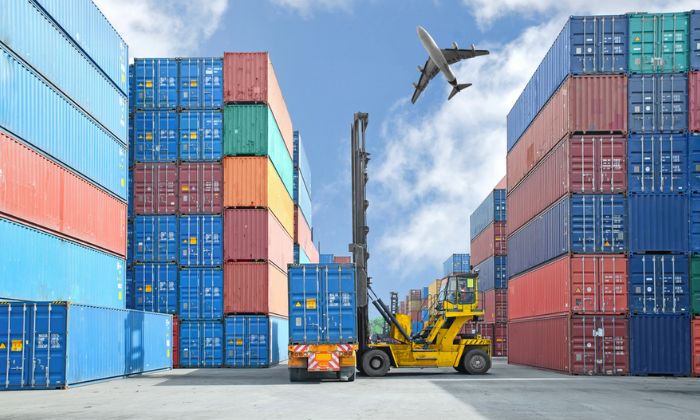The Future of Vietnam’s Logistics: Challenges and Opportunities from APEC
With strategic vision and major strides in logistics infrastructure and service development, Vietnam is preparing for a promising new phase of growth.

Mr. Tran Thanh Hai, Deputy Director General of the Import and Export Department at the Ministry of Industry and Trade, shared with the business community his insights on the opportunities and challenges facing Vietnam’s logistics sector, as well as key development initiatives and the potential to attract investment from APEC member economies.
What is your assessment of Vietnam’s logistics capacity in the context of APEC integration and deeper participation in global value chains?
Vietnam’s geopolitical position in a vibrant economic region gives it a natural advantage. Vietnam has become a hub for intense trade flows and has deeply embedded itself into global economic networks.
With double-digit annual growth in both import-export and e-commerce, logistics has emerged as a backbone in connecting global supply chains. As per the World Bank’s 2023 Logistics Performance Index (LPI), Vietnam ranks 43rd globally and is among the top five in ASEAN—alongside Singapore, Malaysia, and Thailand. The sector has grown at a rate of 14–16% annually, contributing to Vietnam’s 2024 total import-export turnover of USD 786.29 billion. Logistics services are not only driving economic development but also building efficient transportation networks, linking domestic trade with international markets.
Despite significant growth, the logistics sector still faces substantial challenges. Logistics costs are high due to fragmented infrastructure and little interconnectivity. Digital transformation is still in its early stages, with limited collaboration between logistics providers and manufacturers/exporters. Furthermore, Vietnam lacks large logistics companies capable of dominating the market.
Which areas within Vietnam’s logistics sector have the greatest potential to attract investment from APEC businesses, sir?
Developing logistics infrastructure—particularly logistics hubs and seaports—is one of the most promising areas for APEC investment. The government is focusing on high-potential areas such as Hai Phong, Tay Ninh, and Ho Chi Minh City (including Binh Duong and Ba Ria – Vung Tau), where modern infrastructure and favorable policies are attracting both domestic and international investors.
In addition, segments like cold storage, smart warehouses, air cargo logistics, and green logistics are rapidly expanding. The growth of e-commerce and agricultural/seafood exports presents strong investment potential for APEC enterprises.
What policies is the government implementing to enhance inter-regional and international logistics connectivity, particularly in key hubs such as Hai Phong, Lang Son, and Ho Chi Minh City?
The government is implementing a comprehensive set of policies and solutions to improve logistics connectivity across regions and borders, aiming to position Vietnam as a crucial link in both regional and global supply chains.
A new national logistics development strategy for 2025–2035, with a vision to 2050, will soon be approved. This strategy focuses on developing logistics centers in strategic hubs such as Hai Phong, Hanoi, Ho Chi Minh City, Can Tho, and other areas connected to economic corridors, seaports, airports, and international border gates.
The government is also actively encouraging public-private partnerships (PPP) to attract broader participation in logistics infrastructure projects.

Mr. Tran Thanh Hai, Deputy Director General of the Import and Export Department at the Ministry of Industry and Trade
What role do the National Master Plan and regional plans play in attracting investment in logistics infrastructure and export production?
The implementation of the national master plan and regional development plans marks a vital step in streamlining logistics infrastructure and attracting investment. This approach eliminates overlapping and inconsistent zoning, making it easier for businesses to choose investment locations and leverage regional advantages.
New planning laws (2021–2030) will help define growth poles, economic corridors, and key logistics routes, guiding enterprises to develop logistics centers and export zones tied to ports, border gates, and international airports.
In your view, which localities are emerging as new logistics hubs in addition to the traditional growth poles?
Besides traditional centers like Ho Chi Minh City, Hanoi, Hai Phong, and Dong Nai, emerging provinces are gaining traction due to their strategic locations and rapid infrastructure growth.
Quang Ninh, in the north, is a prime example. With deep-sea ports, expressways, and the Móng Cái border gate, it is becoming a crucial gateway between Vietnam and China. Provinces like Thanh Hoa, Hue and Da Nang are also advancing thanks to industrial zones and modern ports.
In the Mekong Delta, Tay Ninh, An Giang, and Can Tho are transforming into agricultural and seafood logistics centers, supporting direct exports via seaports and cross-border routes to Cambodia.
What are the Ministry of Industry and Trade’s expectations regarding investment from the APEC business community in logistics and supporting industries?
Given its strategic location and market potential, Vietnam will remain an attractive destination for APEC enterprises. The Ministry of Industry and Trade hopes to attract APEC investors with advanced technology to develop regional logistics centers, inland container depots (ICDs), cold storage facilities, and multimodal transportation services.
Vietnam will continue to improve its institutional framework to provide the most favorable conditions for the APEC business community and promote sustainable investment and business operations in the country.
What message would you like to send to international investors ahead of the ABAC III Meeting – APEC 2025?
Vietnam is always ready to serve as a reliable bridge between APEC economies. We are committed to working alongside APEC enterprises to build strong and sustainable value chains. APEC 2025 is a key moment for connection, cooperation, and long-term development, and Vietnam pledges to contribute actively to this journey.
Sincerely, thank you!








